#Suicide Squad (2011)
Explore tagged Tumblr posts
Text






The Suicide Squad | James Gunn | 2021
Steve Agee, Starro the Conquerer, et al.
578 notes
·
View notes
Text


I don't know what collective screwed up on not catching the mistake of Owen and not changing it to George, but whatever.
George "Digger" Harkness a.k.a. Captain Boomerang's background circa Suicide Squad (2011)
#Suicide Squad (2011)#Captain Boomerang#George Harkness#Digger Harkness#not Owen omg who did that#Suicide Squad
39 notes
·
View notes
Text
help the toxic yaoi that's going on between them...



From Suicide Squad (2011-2014) Issue #12
#suicide squad (2011-2014)#suicide squad#deadshot#captain boomerang x deadshot#boomershot#floyd lawton#digger harkness
17 notes
·
View notes
Text









Baby's day out with Floyd Lawton.
#Icons;#Edits;#Mine;#DC;#Deadshot#Suicide Squad#2011 issues;#Panels;#He protective of a baby he found in the mission @_@;
4 notes
·
View notes
Text

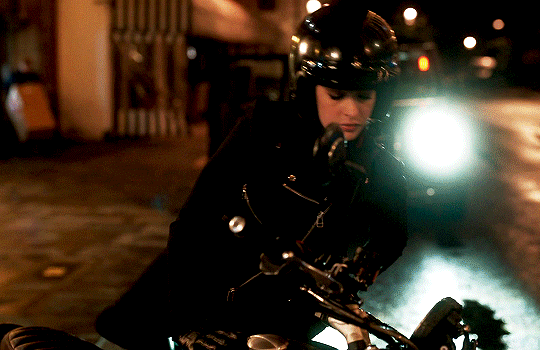
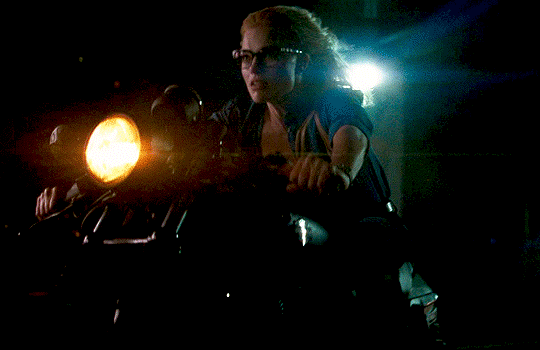

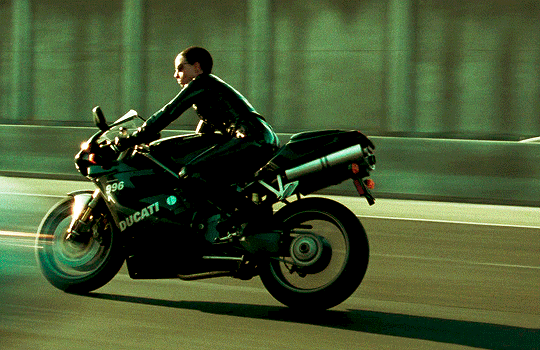

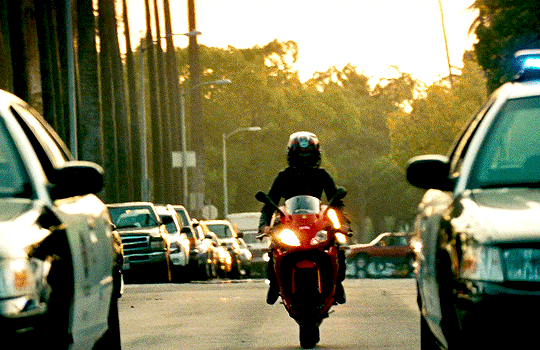
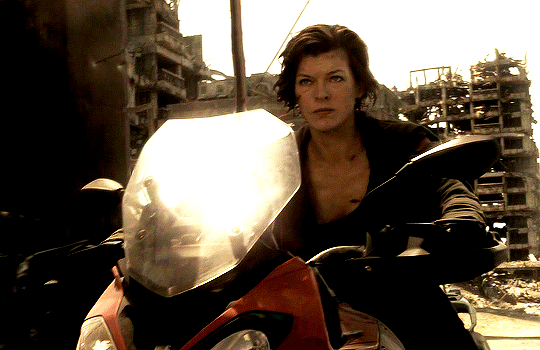


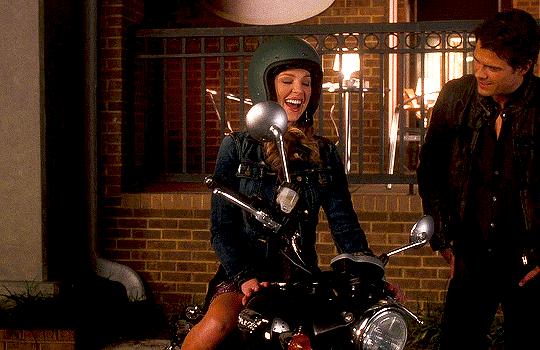


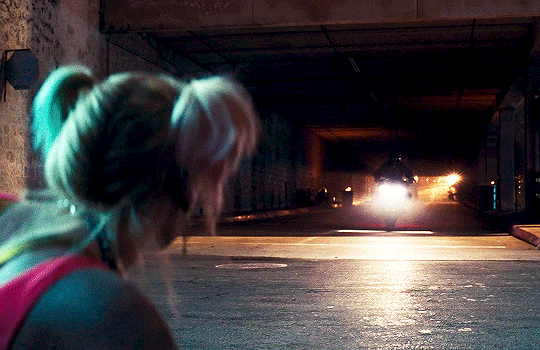






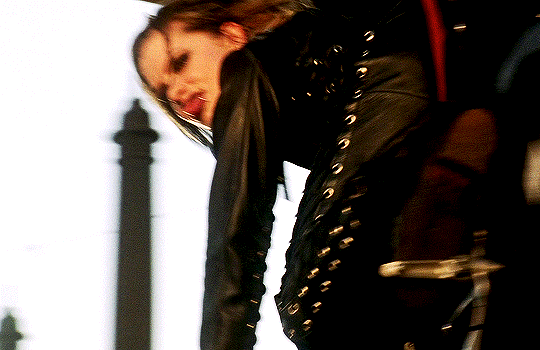





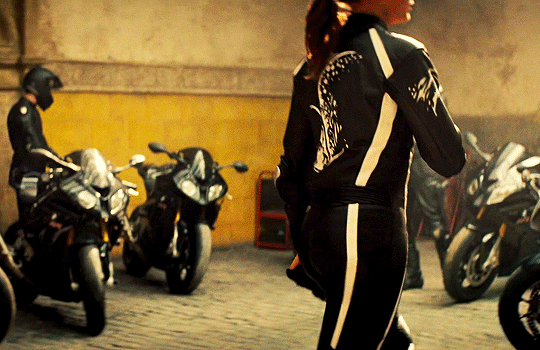



🎬 + 🧍♀️ + 🏍
Angelina Jolie in LARA CROFT: TOMB RAIDER – THE CRADLE OF LIFE (2003) Anne Hathaway in LOCKED DOWN (2021) Margot Robbie in SUICIDE SQUAD (2016) Rose McGowan in PLANET TERROR (2007) Carrie-Anne Moss in THE MATRIX RELOADED (2003) Jessica Alba in IDLE HANDS (1999) Megan Fox in TRANSFORMERS: REVENGE OF THE FALLEN (2009) Milla Jovovich in RESIDENT EVIL: THE FINAL CHAPTER (2016) Keke Palmer in NOPE (2022) Denise Richards in UNDERCOVER BROTHER (2002) Katherine Heigl in LIFE AS WE KNOW IT (2010) Kate Hudson in HOW TO LOSE A GUY IN 10 DAYS (2003) Samara Weaving in GUNS AKIMBO (2019) Mary Elizabeth Winstead in BIRDS OF PREY (2020) Charlize Theron in MAD MAX: FURY ROAD (2015) Pamela Anderson in BARB WIRE (1996) Brittany Murphy in THE DEAD GIRL (2006) Drew Barrymore, Cameron Diaz & Lucy Liu in CHARLIE'S ANGELS: FULL THROTTLE (2003) Juliette Lewis in DALTRY CALHOUN (2005) Claire Foy in THE GIRL IN THE SPIDER'S WEB (2018) Jaime Pressly in TORQUE (2004) Rooney Mara in THE GIRL WITH THE DRAGON TATTOO (2011) Diane Kruger in THE 355 (2022) Diana Silvers in AVA (2020) Halle Berry in CATWOMAN (2004) Michelle Rodriguez in F9 (2021) Rebecca Ferguson in MISSION: IMPOSSIBLE – ROGUE NATION (2015) Mia Goth in MAYDAY (2021) Olga Kurylenko in THE COURIER (2019) Hailee Steinfeld in BUMBLEBEE (2018)
#cinema#filmedit#userleo#underbetelgeuse#usermichi#mikaeled#userrobin#moviegifs#chewieblog#dailyflicks#userstream#junkfooddaily#userfilm#fyeahmovies#cinemapix#userbbelcher#useroptional#ladiesofcinema#*#gif: parallels#gif#flashing gif#long post#idk why i keep making these compilation sets#they take so fkn long to make and they're not very rewarding#anyway here's some of the women that i likeeee
1K notes
·
View notes
Photo
Digger you started doing a donut

I think you got some enjoyment out of it.
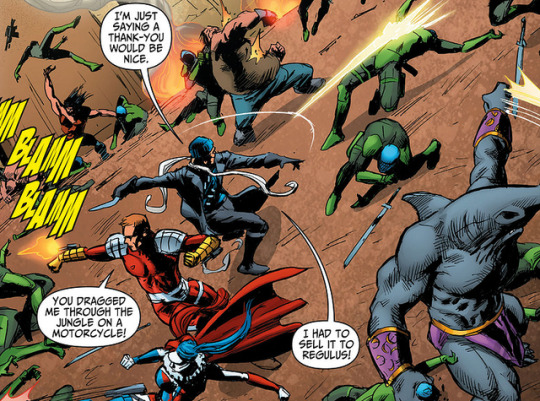
Suicide Squad (v2011) #013 — Dead End
15 notes
·
View notes
Text
DC Therapists: Psychiatrists, Psychologists and Counsellors
Say you want to write about a DC superhero seeking psychological treatment or seeing a counsellor. I know, it often feels overwhelming trying to pick someone to use; it can feel like every psychologist or psychiatrist is either seen treating villains in Arkham Asylum and getting promptly killed on page, or is an outright villain. But not all of them fit into those two categories! There are more than a few characters across DC who have provided psychological treatment for various superheroes and can be trusted to keep secret identities; both those who know about various identities and those who would keep them as privileged information if approached by someone who wanted treatment.
This is the please stop using Dinah Lance as a psychologist in stories about comics canon, she is a florist, martial artist and secret agent folks post.
Heroes who also have psychological qualifications:
Lilith Clay [Omen] and Kara Zor-L [Power Girl] (Action Comics #1051, Power Girl 2023): psychiatrist and telepathic therapist
Kent V. Nelson [Doctor Fate] (Countdown to Mystery 2007): psychiatrist
Khalid Nassour [Doctor Fate] (Superman 2018 #23-25): EMT and counsellor
Guy Gardner [Green Lantern] (Guy Gardner #14 1992): counsellor and school teacher
People who have specifically treated superheroes or know superhero identities:
Dr Claire Foster (Superman 2002, Titans 2008): either psychiatrist or psychologist
Dr Owen Slade (Flash 1987 #9-11): psychiatrist
Dr Bridget Clancy (Nightwing 1999): doctor, occasional psychiatrist
Dr Parker (The New Titans #57 1988): therapist
Dr Marion Winston (Amethyst Princess of Gemworld 1983 and 1985): child psychologist
Dr Leslie Thompkins (Batman, generally): general practitioner/primary care physician, occasional social worker
Dr Alan Huss (Batwoman 2011): therapist
Dr Simon LaGrieve (Suicide Squad 1987): psychiatrist
Dr Marnie Herrs (Suicide Squad 1987): psychotherapist
Dr Mac McCoy (Suicide Squad 1987): psychiatrist or psychologist - refers to himself as a head-shrinker
Dr Edmond Cathcart (Brave and the Bold 1955): psychiatrist
Dr Brian Bryan (Azrael 1995): psychiatrist
Dr Evelyn Rosen (Huntress 1989): therapist
People slightly outside the scope of the project who are still worth mentioning:
Dr Ryk’rr (Legionnaires 1993 & Legion of Super-Heroes 1989): a psychologist for the Legion of Super-Heroes. Slightly beyond the scope of this project, given she’s based in the 31st century, but if you’re writing stories set in the 31st century and want a therapist, she’s available!
Dr Harleen Quinzel (Harley Quinn, Batman generally): psychiatrist. I don’t think Harley reasonably fits into the categories I want, as she’s definitely disbarred as a psychiatrist and all over the shop depending on period, but Harley also does love to give unsolicited counselling advice.
If you want to add more names in I am delighted to add them.
Currently in the “this is going to take more research” pile are the following:-
Rene Carpenter (Vigilante 2005): I need to track down a version of this miniseries, and see whether she’s a beneficial character or not. Given this is Vigilante, that’s not a given.
Dr Derwood Denton (Ambush Bug): He treated Ambush Bug and then became a TV doctor and from summaries seems to occupy a similar niche to Dr Phil at best, so I suspect he falls outside the scope of what I want.
Carl Jung and Sigmund Freud (Kid Eternity 1993): this is some Vertigo level nonsense involving dead spirits of real psychiatrists and I am going to need to read around it for more context.
211 notes
·
View notes
Text
Here's a list of recs if you'd like to read somecomics about different batfam characters:
BRUCE WAYNE - Batman: Year One (1987) - Batman: The Long Halloween (1996) & Dark Victory (2000) - Batman: Knightfall Saga (1993) - Batman: No Man's Land Saga (1999)
SELINA KYLE - Catwoman (1989) - Catwoman (1993) - Catwoman: When in Rome - Catwoman: Selina's Big Score
DICK GRAYSON - Robin & Batman (2022) - Robin: Year One - The New Teen Titans (1980) - Nightwing (2016) #35-43 - Batman: Black Mirror
JASON TODD - Batman: The Cult - Batman: A Death in the Family (i dont actually care for this but i feel obligated to include it so here...) - Batman: Under the Red Hood - Robin Lives!
TIM DRAKE - Batman: A Lonely Place of Dying - Robin (1993) - Young Justice (1998)
CASSANDRA CAIN - Batgirl (2000) - Batgirl (2008) - Batgirl (2024) - Birds of Prey (2023) (which also includes Barbara!)
BARBARA GORDON - Batgirl: Year One - Black Canary/Oracle: Birds of Prey - Birds of Prey (1999) (especially Gail Simones run!!) - Suicide Squad (1987) #49-50
DAMIAN WAYNE - Batman and Robin (2011) - Robin: Son of Batman - Robin (2021) - The Boy Wonder - Batman & Robin (2023) (currently ongoing! imo this would be a good place to start reading since its happening right now so you can see it happen along with everyone else!)
DUKE THOMAS - Batman: Zero Year - We Are Robin - Batman & The Signal
HELENA BERTINELLI - Huntress: Year One - The Huntress (1989) - Batman/Huntress: Cry for Blood - Helena is also a character in birds of prey from issues #57-127 and a reocurring bat character in the 90s
STEPHANIE BROWN - Detective Comics #647-649 - Showcase '95 #5 - Robin (1993) #126-147 (steph has a ton of appearances in Robin 1993 so it would be good to read that for more or to look through her appearances on locg if you just want to read about her! these chapters are her as Robin.) - Batgirl (2009)
I haven't read a super large amount for every single one of them so disclaimer that some of the ones I mention here might not be their best! These are what I could think of but there are plenty more, especially as standalone issues, so if anyone sees this please mention more!! also, there are lots of comics that are questionable but this list was very much on the fly off the top of my head so i was kind of sat here with my head in my hands like 'god i need to give more than one jason todd comic dont i....' and this was all i could come up with that wasnt like.... a random detective comics issue idk
I'd also like to say these feature a lot of minis just for ease but there are a ton of really good guides available for these character -- imo a lot of Jason's best stuff is as Robin within tec and batman
#batfam#batfamily#bruce wayne#dick grayson#jason todd#tim drake#stephanie brown#barbara gordon#helena bertinelli#cassandra cain#duke thomas#damian wayne#reading is WHAT?#essential thats right!#if anyone from twt recognizes me i actually need you to look away like im freestyling im in a haze im trying to name any i can plea-
752 notes
·
View notes
Note
hi sex witch, quick question about your bat blogging
a friend recently got me to actually read some comics books, wanted to check out the girls books but the barbara gordon in the books this friend linked seems like such a wet blanket? Just sort of dull, I assume its a case of different authors or different continuities but
where can I find the horny crimes weirdo oracle barbara that ive seen you blogging about so extensively? She seems far more fun
lmaooo
with wet blanket Babs you are, probably, reading more contemporary Barbara stories. ever since the New 52 continuity reboot in 2011, when her paraplegia was magically taken away and she returned to being Batgirl, she's been increasingly watered down from her horny crime weirdo days.
my favorite Barbara, the horny freak who's regularly beefing with other vigilantes and running a one woman surveillance state from her wheelchair, is from New Earth, the continuity that ran from 1986 to 2011 (until the aforementioned reboot). she made her big debut as Oracle in Suicide Squad #23, but if you want to cut right to the good stuff (and see her deranged homoerotic partnership with Black Canary) you can cut straight to Birds of Prey, which starts with a few solos issues and miniseries (the original Birds of Prey, Manhunt, Revolution, Wolves, Batgirl, and The Ravens) before the proper Birds of Prey ongoing series launched.
100 notes
·
View notes
Text











The Suicide Squad | James Gunn | 2021
Viola Davis, Daniela Melchior, John Cena, King Shark (Sylvester Stallone), Idris Elba, David Dastmalchian
#Viola Davis#John Cena#Sylvester Stallone#Idris Elba#David Dastmalchian#Daniela Melchior#James Gunn#The Suicide Squad#2011
123 notes
·
View notes
Text

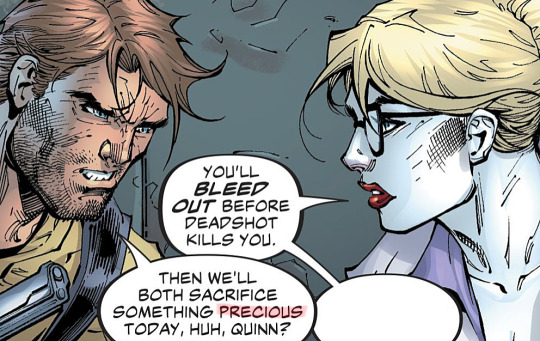
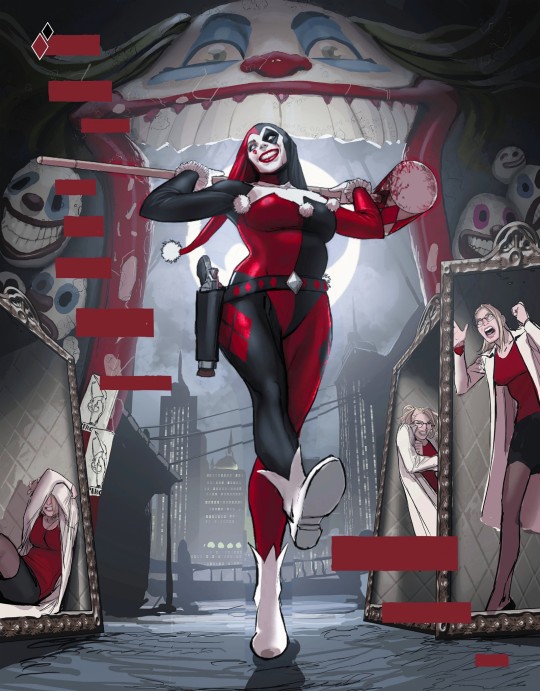
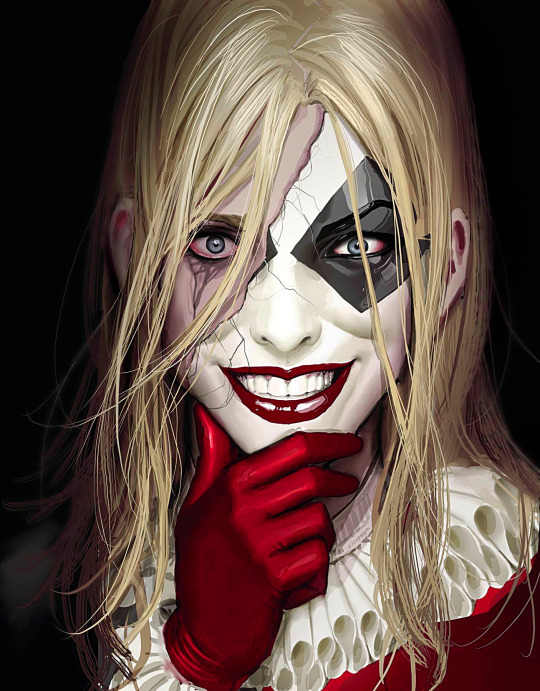
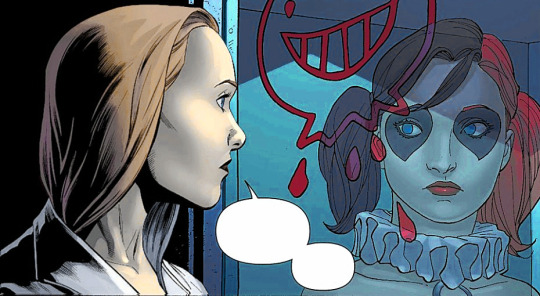


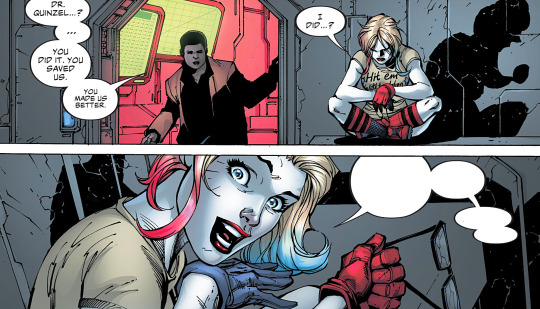
wish i could rip her from me
she's like a fucking disease
no way of running when I'm running from the v i l l a i n in me
Harleen (2019) Cover by Stjepan Šejić
Harleen (2019) #3 by Stjepan Šejić
Suicide Squad (2016) #8 Cover by Lee Bermejo
Suicide Squad (2016) #8
Writers: Rob Williams Pencilers: Jim Lee Inkers: Scott Williams, Richard Friend, Sandra Hope Colorists: Jeremiah Skipper Letterers: Pat Brosseau Editors: Brian Cunningham, Harvey Richards, Andy Khouri
Suicide Squad (2011) #6
Pencilers: Clayton Henry Inkers: Scott Hanna, Clayton Henry Colorists: Val Staples, Hi-Fi Design
Harley Quinn: Black + White + Red #1 Cover by Stjepan Šejić
Harley Quinn: Mad Love (Novel) Cover
259 notes
·
View notes
Text

#he’s so smug#love him#Captain Boomerang#Digger Harkness#George Harkness#Suicide Squad#Suicide Squad (2011)
23 notes
·
View notes
Note
Okay so I keep seeing all your Twenty One Pilots stuff and it makes me really happy and you know a lot about them which is really cool. The way you describe the overall message of the songs is so interesting.
I've only listened to a few of their songs and not as part of the "storyline". Would you be able to give me an idea of how I should go about listening to them in the "right" order? Should I just start with their first album and just listen to everything chronologically?
Sorry if this is dumb. I'd just love to actually get into their music a little more! The songs individually are really cool but I want to follow the overall "plot" of it.
Hello! It’s not dumb at all! I’m thrilled!
(they’re freaking me out right now with the stuff they’re doing with their story, supposedly, on their tour in the UK, so that’s been my hesitation in answering this. if they teeter over into dropping the faith—which I don’t believe they’re going to do but sometimes my fears get the better of me—then obviously I wouldn’t want to recommend them to anybody. but for right now I don’t believe they’re going to do that, I believe better of them, so I’m answering!)
I think start with the first album and then go chronologically, yeah. I believe Tyler Joseph (lead singer) would want you to start with Vessel (2011) but that’s not their first album as a band. Their first album as a band is Twenty One Pilots, and it is too good to skip or consider less-than just because they weren’t signed to a record label and he likes his sound better now, so don’t listen to him, listen to the first album!
Personally I think it would be cool if you listened to the stuff Tyler Joseph was writing before / during the Self-Titled album, too. The un-listed stuff. On YouTube, you can find albums he wrote before twenty one pilots, when he was just a kid in his basement figuring life and music out, or you can find the kind of Quasimodo-half-released album they did between Self-Titled and Vessel (Vessel was when they got signed to a record label.)
Anyway, here’s how I would listen to them:
1 - No Phun Intended (songs he created before the band, on YouTube)
2 - Twenty One Pilots (No Josh Dun ((the drummer)) on this album, instead it’s the first two original members with Tyler, and their first album as a band, but the lyrics are Tyler.)
3 - Regional at Best (the half-released album I came onto the scene during, they performed songs from this one live, then got signed to a record label and this album disappeared but some of it’s songs got re-produced onto Vessel.)
4 - Songs by Tyler Joseph and Travis Whitaker (worship songs he and his friend from church wrote and made together, with Josh Dun on the drums, around the time Vessel was being produced for the main band. These include: Producer, Rulers of Reverse, Twenty-Nine, Lord of Glory, and Dead Come Alive you can find most of these on Spotify but Dead Come Alive has a sick music video animated by FullofEyes which you can find on YouTube and should definitely watch. There are two versions. I like the old better than the new because it tells more of a straightforward story and is less symbolic but they’re both excellent.)
5 - Vessel (Here’s where the band would want you to start, I believe.)
6 - Blurryface (This is where just about everyone actually starts and where probably most of the songs you’ve heard come from. It’s also where the lore ((the story they’re making up album-by-album to go with the songs)) most overtly starts by introducing Tyler Joseph’s Personification of Self-Focus and Dark Thoughts, Blurryface.)
7 - Heathens (This is a single, it went with Suicide Squad but everything twenty one pilots does has a double-maybe-triple-meaning, so the music video actually transitions from the story in Blurryface to the story of the next album. Don’t pay any attention to Suicide Squad.)
8 - Trench (This is where the story they were telling got so deep and prevalent in their actual lyrics and music videos that they lost a bunch of the people who liked Blurryface but the fans just got more hooked. I specifically recommend watching all the music videos for this one.)
9 - Singles (You can listen to “Level of Concern” and “Christmas Saves the Year” around this time, they were songs he mostly did for family during the COVID-19 pandemic, but the album art had hints to the big story, too. Also go ahead and listen to their cover of Cancer, it has very little to do with anything but it’s a good cover.)
10 - Scaled & Icy (If you’re not hooked on the story by the time you listen to this album it’s going to be kind of a shock, you’ll have to get used to it. It’s this bouncy piano-synth-80s-mainstream-sounding vibe that sounds very little like them ((except for Choker, my favorite on the album.)) But if you stick with it you will wind up liking it, it is impossible not to. And that’s kind of the point. If you can find it online, there’s a sick livestream event they did that has a lot to do with the story but from anybody’s point of view it’s just really cool to watch.)
11 - Twenty-Four Cover (this is Tyler Joseph covering Switchfoot’s Twenty-Four, and I just want you to pretend that you’re me, it’s been a long time since your favorite band that came into your life around the same time you gave it up to Jesus has done anything, you’re in a cabin in North Carolina, and suddenly here’s your favorite singer, the one who used to sing about the need to be saved and the hope found in giving yourself up to Christ but has recently been singing about like media and his own fandom and stuff—suddenly he out of nowhere covers a very Christian song and doesn’t dress it up or overproduce it in his own style. Just sings it like he would if it came on in the car, and he liked the song, and he was singing along, in his normal singing voice. That’s how I want you to experience this cover.)
12 - Clancy (Most recent album, the one they’re touring now. Big into the lore. You’ll be able to tell that the end song is just made to be the narration of a music video, the climax of the story. It ends on a cliffhanger. We’re all mad about that. Good album, though.)
13 - The Line (They made this for Arcane but who cares about Arcane, ignore Arcane. It’s about his grandmother passing away and his fear of and relationship to ever-approaching death, so get prepped for that. Watch the Game Awards on YouTube where they perform it LIVE for the BEST version of the bridge of this song.)
And that’s pretty much it! Thank you for asking.
23 notes
·
View notes
Text
BruDami Reading List
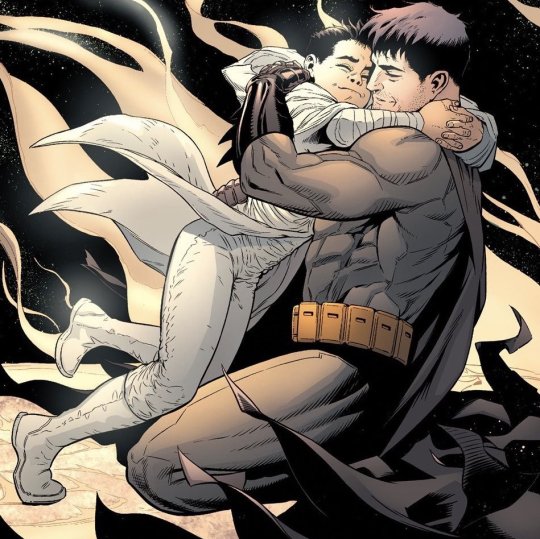
Comics and issues that feature both Bruce and Damian, in chronological order (hopefully, because we all know DC continuity is shit).
Sort by color (dark mode recommended):
Lots of interactions.
Minor interactions.
Indirect interactions (thoughts/mentions/dreams/flashbacks...) or appearing in the same comics but no interactions.
Note: This categorization can be somewhat subjective, but all listed comics are guaranteed to be BruDami-relevant.
Frequently updated.
________________________________________________
Main Continuity
Post-crisis:

Batman (1940) #655-658, #665, #666
Batman: The Resurrection of Ra’s al Ghul
New 52:

Batman and Robin (2009) #16, #20, #23
Batman: The Return
Batman and Robin (2011) #1-17 + annual 1
Batman: The Dark Knight [II] (2011) #10, #12, #14, #15 Goddammit Bruce.
Batman: Death of the Family
Detective Comics (2011) #14
Batman Incorporated (2012) #1-9
Batman and Robin (2011) #18
Batman (2011) #19, #20
Batman and Robin (2011) #19-23, #29-32 + annual 2
Robin Rises: Omega
Batman and Robin (2011) #33-37
Robin Rises: Alpha
Batman and Robin (2011) #38-40 + annual 3
Robin: Son of Batman #1, #9, #11, #12
Batman & Robin Eternal #22, #26
Rebirth:
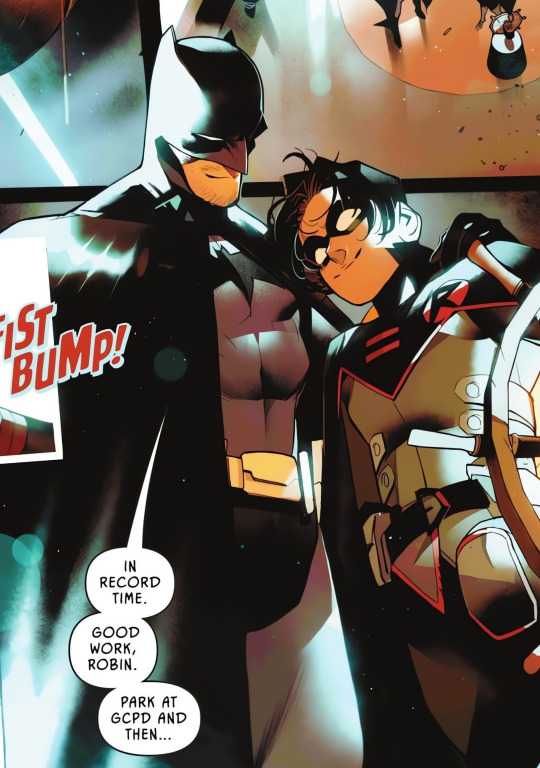
Nightwing Rebirth
Nightwing (2016) #1, #4, #42
Deathstroke (2016) #4, #5
Superman (2016) #10-11
DC Rebirth Holiday Special
Super Sons (2017) #1, #2-4, #5, #10, #12, #14, #16
Superman (2016) #20, #21, #22, #24-25
Teen Titans (2016) #1-2, #5, #10
Dark Nights Metal #2
Teen Titans (2016) #12
Suicide Squad (2016) #26
Green Arrow (2016) #32
Dark Nights Metal (2016) #3-6
Detective Comics (2016) #975, #1002-1004, #1017, #1027
Deathstroke (2016) #31, #32, #34-35 Bruce's possessiveness is strong here - the only good thing about this crappy arc.
Super Sons (2017) Special
Batman (2016) #16, #17, #33-34, #35, #62, #80-81
Batman: Pennyworth R.I.P Bruce apart.
Robin 80th Anniversary 100-Page Super Spectacular
Teen Titans (2016) #42-43, #44 + annual 2
Detective Comics (2016) #1029-1031, #1032-1033
Batman (2016) #106
Detective Comics (2016) #1034
Robin (2021) #1-3, #9, #12
Shadow War: Alpha
Batman (2016) #122
Deathstroke Inc. #8
Robin (2021) #13
Batman (2016) #123
Deathstroke Inc. #9
Robin (2021) #14
Shadow War: Omega
Robin (2021) #15
Batman vs. Robin (2023) #1-2, #3, #4
Lazarus Planet: Alpha
Lazarus Planet: Omega
Batman vs. Robin (2023) #5
Knight Terrors: Batman #1, #2
Knight Terrors (2023) #3, #4
Knight Terrors: Night's End
Batman (2016) #137, #138
Batman and Robin (2023) #1-7, #8-9, #10-20 + annual 1 Mostly tooth-rotting fluff (basically DC compensating us for whatever tf happened after Alfred's passing I guess).
Batman/Santa Claus: Silent Knight #1, #2-3, #4
Batman/Santa Claus: Silent Knight Returns #1-4, #5
Absolute Power (2024) #1, #2, #4
Detective Comics (2016) #1091-1092, #1093, #1094
Those that I can't quite put in the main timeline but are still canon.
Convergence: Batman and Robin
Batman: One Bad Day - Ra's al Ghul
Justice League: No Justice
Batman (2016) #145-147, #148, #149
Super-Pets Special: Bitedentity Crisis #1
Batman Black and White (2021) #5
Batman: Uncovered
Batman: Urban Legends #20-23
Monkey Prince #1, #2, #4
The Shadow/Batman #1-2, #3, #4-5, #6
Elseworlds and/or non-canon
Damian - Son of Batman #1, #2, #3-4 Not recommended.
Batman: Li'l Gotham (2012) #1-2, #3, #6-7, #8, #9-10, #11, #12, #13-14, #15, #16-18, #20, #21, #22, #23, #24
Dark Nights: The Batman Who Laughs Tell me I'm not the only one who wants to see more of Earth -22 BruDami...
Batman/Teenage Mutant Ninja Turtles (2016) #5-6
Batman/Teenage Mutant Ninja Turtles II (2018) #1-2, #3, #4, #5-6
Future State: Gotham (2021) #13-14, #15-18 In which Damian went to hell to search for his father.
Justice League vs Godzilla vs Kong (2023) #2
The Boy Wonder #1-4, #5
Batman and Robin and Howard (2024) #1-2, #3, #4
Batman and Robin and Howard: Summer Breakdown (2024) #1, #2-3
Little Batman: Month One (2024) #1, #2-3, #4 Watch Merry Little Batman before reading for a better experience!
Webtoon
Batman: Wayne Family Adventures
#1, #2, #3, #12, #13, #14, #17, #18, #19, #21, #22, #23, #25, #26, #34, #35, #38, #52, #56, #57, #68, #93, #97, #102, #109, #112, #113, #114, #117, #120, #128, #130, #136, #137, #138, #146, #149, #150, #151
51 notes
·
View notes
Note
I so badly want to get into your DC au but i know absolutely nothing about DC.
I grew up on marvel lol
dfgghcgd that’s oki! i actually grew up on both marvel and dc cuz of my dad through watching movies and started just kinda getting deeper into on my own
my au isn’t completely loyal to dc canon, im basically just doing whatever i want like an elseworld story basically, i pull from different continuities, mix with sonic lore and force it all to bend to my will
if you want to go thru my dc au have any questions about the lore, or what exactly is going on feel free to send an ask and i’ll be happy to clarify anything!!!
but if you want to get into dc id say is easiest through watching the animated shows, movies, like:
(some i may have pulled stuff from, some i haven’t just saying wchich ones i really liked)
- batman the animated series
- the batman
- superman the animated series
- superman vs the elite
- wonder woman (2009)
- wonder woman bloodlines
- justice league + the spin off justice league unlimited
- teen titans 2003
- batman beyond
- batman beyond return of the joker
- batman: under the red hood
- the batman vs dracula
- DCAU batman movies
- creature commandos (15+, gore)
etc.
just listing some off the top of my head lol, you can basically just shop around for the dc animated content u like cuz there’s SO much
id also highly recommend watching playthroughs of the Arkham Batman games!!! i watched those all the time as a kid and ive started playing through them myself and its sooo much fun!!!(ignore suicide squad kills the justice league)
not the biggest fan of dark superman stuff but i do enjoy watching Injustice and Injustice 2 play throughs gor the character banter
some live action movies/tv shows that i rlly enjoyed are:
-The batman (15+)
- the penguin (15+)
- christopher nolan batman trilogy
- christopher reeeves superman films
- batman and robin (its so cringe and its amazing)
- james gun suicide squad (15+)
- birds of prey (15+)
- the upcoming superman movie
as for comics the dc universe has rebooted soooo many times so you can kinda pick and choose, some standouts i really enjoyed recently were:
- batman hush
- red robin (2009 -2011)
- Arkham Asylum: A serious house on a serious earth (inspo for the arkham games and some really disturbing imagery, pretty psychological horror)
- Batman: The court of owls (there’s a motion comic too)
- Batman the long halloween
- poison ivy: cycle of life and death
- poison ivy: the virtuous cycle (body and plant horror, only enjoyed up to issue #9 tho, didn’t vibe with the rest)
- harleen
- harley quinn black white and red
- Catwoman: lonely city
- harley and ivy
- dc pride comics!!
- The boy wonder
- superman red & blue
and that’s about all i can think of off the top of my head!!! srry about the ramble but hope this was helpful!
36 notes
·
View notes
Text
indy’s dc comics watch recs
⭐️ are faves // -> are direct sequels
live action movies
batman (1966) ⭐️
batman (1989) -> batman returns (1992)
batman forever (1995) ⭐️
catwoman (2004)
the dark knight (2008) [note: this is the sequel to batman begins (2005)]
watchmen (2009) ⭐️
birds of prey (2020) [idk if this is a direct sequel to the other suicide squad movie, i don’t remember the deets]
the suicide squad (2021) [this is another one idk if it’s part of the other suicide squad movie]
animated films
batman beyond: return of the joker (2000) [note: the sequel movie to the series listed in “animated shows” of the same name]
wonder woman (2009)
batman: under the red hood (2010) -> batman: death in the family
justice league: doom (2012)
son of batman (2014) -> batman vs. robin (2015) ⭐️
batman: assault on arkham (2014) ⭐️
justice league war (2014)
justice league dark (2017)
batman and harley quinn (2017) ⭐️
injustice (2021)
live action shows
smallville (2001-2011)
animated shows
batman: the animated series (1992-1995) -> the new batman adventures (1997-1999) ⭐️
batman beyond (1999-2001) ⭐️
justice league (2001-2004) ⭐️ -> justice league unlimited (2004-2006) ⭐️
batman: the brave and the bold (2008-2011)
young justice (2010-2022) ⭐️
harley quinn (2019-)
updated 01.17.25
35 notes
·
View notes